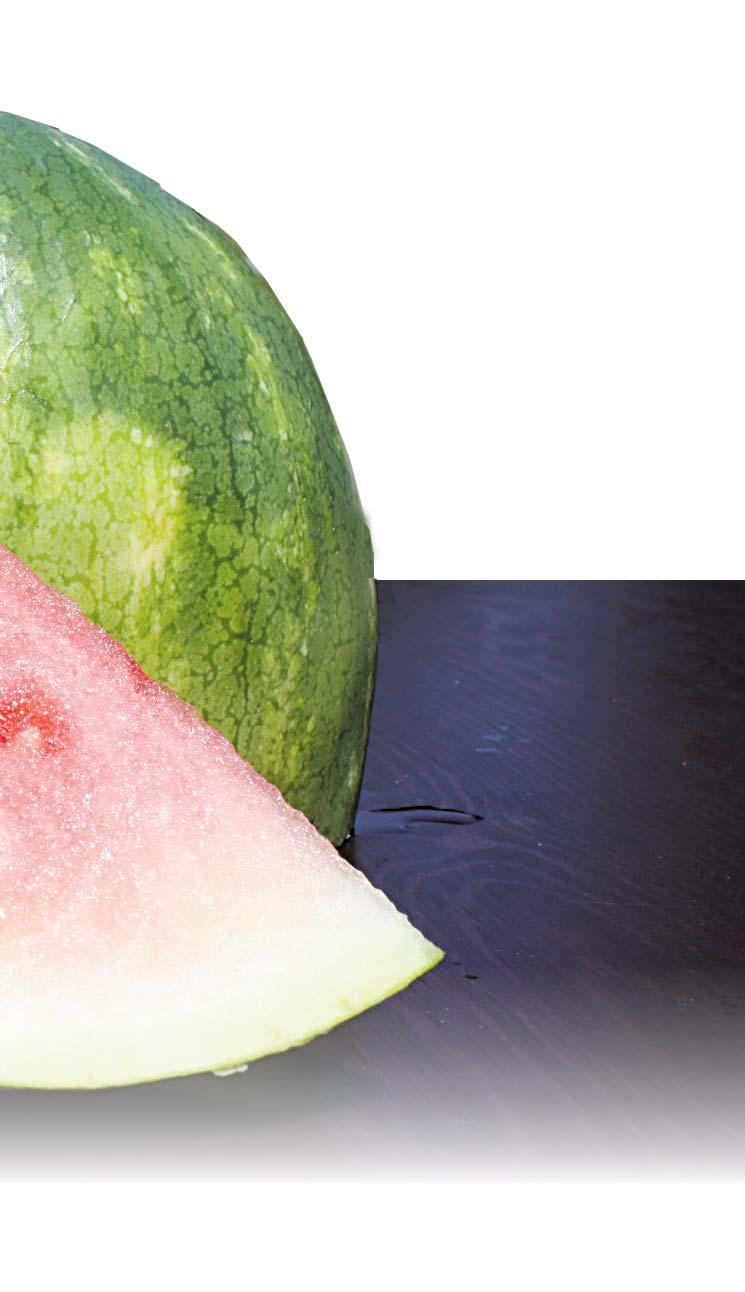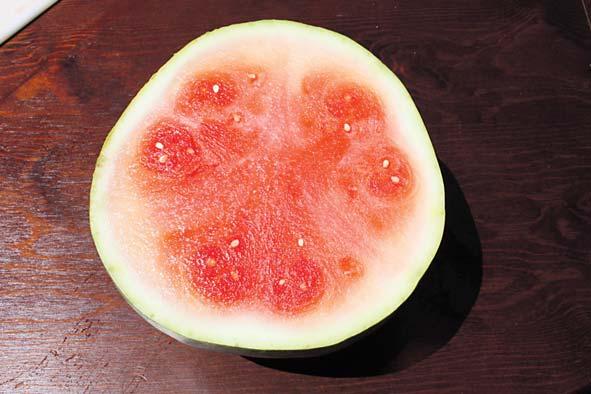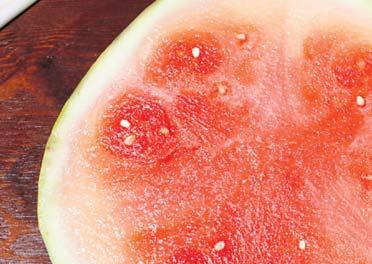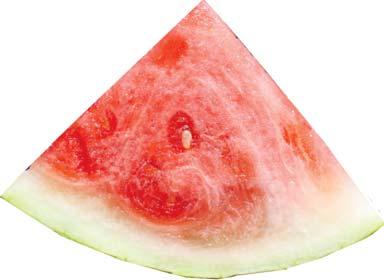
5 minute read
Wonderful watermelon
Courtesy of KATERNIA COLE-COFFEY Photos by ALISON JAMES
Nothing says summer like good friends and family gathering outside on the patio or front porch and enjoying a ripe watermelon. This refreshing, delicious summer treat is a favorite among almost everyone – and nowhere, perhaps, is that truer than here in Franklin County, where Russellville is the Watermelon Capital of Alabama. Looking for an economical dessert that feeds a crowd? Try a watermelon! Red or yellow, salt or no salt, forks, spoons or your hands, you have a mouthwatering, healthy, colorful, naturally sweet treat. From carvings to pickles, watermelon is a well-rounded fruit with many benefits. No matter how you slice it, watermelon reigns supreme!
Advertisement
Did you know?
Watermelon is 100 percent usable.
• Watermelon flesh can be used in savory or sweet applications and even gilled. • Watermelon peel is perfect for carving and as garnish on the plate or glass. • Watermelon rind can be used for pickles, stir fry and slaw. • Watermelon seeds can be roasted and used on salads.



WATERMELON 101

From watermelon.org

1. Watermelon can be traced back to southern Africa. 2. The fi rst evidence of people eating watermelon was recorded in Egypt in the second millennium BC. In the 10th century China began cultivating watermelon, and in the 16th century European colonists and the slave trade brought watermelon to the Americas, with the fruit fi rst grown in Florida. Watermelon reached South America in the 17th century. 3. Watermelon is a member of the cucurbitaceae family – the gourd family of fl owering plants – which includes squash, zucchini and cucumber. Botanically, watermelon is a fruit, but it is grown using vegetable practices: planted from seeds, tended throughout its growth period, harvested and the fi eld cleared like a vegetable crop. 4. In order to grow watermelon, you need sun, bees, well-drained sandy soil and water. 5. At full maturity, watermelons are harvested by hand. 6. Research shows taste is the top reason consumers buy watermelon. 7. Watermelons are 92 percent water, constituting most of their weight. 8. Watermelon varieties fall into four types. Seeded: round, long, oblong and 5-45 pounds Seedless: round to oblong, 1045 pounds, with any small white seed coats in the fl esh being undeveloped and edible Mini: round, seedless, 1-7 pounds, with thinner rinds that result in greater yield per pound Yellow-Orange: round, seeded or seedless, 10-30 pounds, generally sweeter than red-fl eshed watermelon 9. Almost 85 percent of watermelon varieties grown today are seedless. 10. Arizona, California, Florida, Georgia and Texas are the top watermelon-producing states. The year-round supply of watermelon comes from Mexico and Guatemala.
IS THIS WATERMELON RIPE?
• Watermelons should be firm, symmetrical and free of bruises, cuts, dents or soft spots. Some surface scarring, however, is normal. • Watermelons should be heavy for their size. Each watermelon is 92 percent water, contributing to most of its weight. • The ground spot – the part of the watermelon resting on the soil – changes from pale white to a creamy yellow at the proper harvest maturity.
• Depending on growing conditions, variety, handling and other factors, a whole watermelon has a 3-4-week shelf life after it is cut from the vine. Considering the supply chain, a whole watermelon is expected to have a 7-10day shelf life by the time it’s received by a restaurant or grocery store. • A whole watermelon does not need to be refrigerated. The ideal storage temperature for whole watermelon is 50-59 degrees. Temperatures below 45 degrees cause chilling injuries like pitted rind, off fl avor and loss of color. • Remember to wash a watermelon before you cut it. • Fresh-cut watermelon should be refrigerated and kept chilled when served.



WAYS TO USE WATERMELON IN COOKING:
• Juice and puree – Blend until smooth and strain if desired. • Glaze – Mix pureed watermelon into barbecue sauce for a subtle fruit fl avor. • Compress – A vacuum-sealing technique that removes air from watermelon, concentrating and intensifying the fruit’s juices, color and fl avor. The product is slightly translucent. Season the watermelon, if desired, before vacuum sealing with ingredients that complement watermelon. • Pickle – Watermelon rind is used to make pickles for Southern dishes and global fl avor profi les, such as combining North African sweet spices to make preserved lemon and watermelon chutney. The rind can be “canned” for longer storage or quick pickled. • Garnish: Use as an accompaniment when you need a bright, tart, sweet taste. Julienne and add to a salad or slaw, or include to add complexity to a beverage. • Infuse – Infuse watermelon with single ingredients, like lime juice, tea and vodka or with a marinade before adding to a recipe. Watermelon does not typically need more than an hour for marinating. • Jell – Can be used to slow the release of watermelon fl avor or present watermelon fl avor with an unexpected texture. • Foam – Create fresh foam from strained watermelon juice for a topping or freeze for a different texture and later use. • Consommé – Strain watermelon puree through cheesecloth, allow to separate and decant the clear liquid.


DELICIOUS AND NUTRITIOUS
Watermelon is an excellent source of: • Vitamin A, which is important for eye and skin health. • Vitamin C, an antioxidant that might aid in the maintenance of normal connective tissues and promote wound healing and support the immune system’s defenses against infections and viruses • Pyrisoxine, or vitamin B6, which is essential for enzymatic functions that convert food into cellular energy. The body uses it to help break down protein – so the more protein you eat, the more vitamin B6 you need. • Potassium, which is a mineral found in every cell that is necessary for water balance and might help maintain normal blood pressure.










